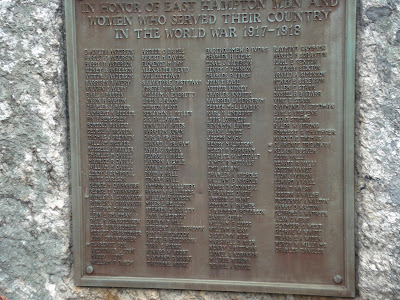Jimmy Banning, a year older than me, lived around the corner on Forest Street. We were in Boy Scouts together and had gone to summer camp at Camp Tadma. He was our paper boy delivering the afternoon Middletown Press. I remember him having a great sense of humor. After graduation in 1965, he enlisted in the U.S. Marine Corp.

From EHHS Class of 1965 yearbook - the Oracle
Bernie Bachleda who lived on Main Street, moved to EH in 1964. Bernie’s favorite sport was football and he would be at the Center School Grounds kicking a football up and down the field waiting for others to join in a pick-up game. Bernie was a great athlete and a star fullback on our 1965 soccer team that went to the State Championship. Bernie enlisted in the Army shortly after graduation in 1966, intending to follow in his father’s footsteps as a career Army officer.

From EHHS Class of 1966 yearbook - the Oracle
David Swan who graduated in 1967 was drafted into the Army as part of the massive call-up for Vietnam. He grew up on Abby Road. We played Little League Baseball, he on the Braves and me on the Cards. It still makes me sad and angry that these men lost their lives at such an early age.
 From EHHS Class of 1967 yearbook - the Oracle - courtesy of Jean Barton '68
From EHHS Class of 1967 yearbook - the Oracle - courtesy of Jean Barton '68I, as well as all of us in East Hampton, should thank Linda Wallace for the tremendous effort to organize the Wreaths Across America program. Special thanks to the VFW Color Guard and all who participated including fifers Jennifer Jansenski and Karen Johansmeyer from the 3rd CT Regiment Fife and Drum Corp and remarks by Kathy Barber, President of the Ladies Auxiliary, Chaplain Laura Schnactner and Quartermaster Bruce Wark, VFW Post 5095.
Placing Memorial Wreaths at the East Hampton Veterans Memorial Monument representing the seven branches of the armed services were: EH VFW Post 5095 members from WW II Donald Tedford and Dennis Erickson and from the Cold War Rolland Jackson; Joyce Chamis, Ladies Auxiliary of VFW, Chief of Staff, District 6; Jody Drumeer, VFW Auxiliary and VFW State Teacher of the Year 2007; Robert Hodeson, Retired Chief Petty Officer Coast Guard and VFW State Teacher of the Year 2008; Kathleen Payne of Glastonbury, a member of the Nathan Hale Memorial Chapter, Daughters of the American Revolution. A special memorial wreath was laid in honor of Gov. William A. O'Neill, a former East Hampton resident who passed away in 2007. O'Neill had served a a tail gunner in the Korean Conflict in the U.S. Air Force.
It was a moving and well deserved tribute. I invite you to stop by the Memorial and be a part of local history.








 He exemplified the Greek ideal of an athlete in competition – using one’s skills and ability in pursuit of excellence without doing personal harm or injury to his fellow competitor. On and off the field he is and was a gentleman. A fierce competitor, Bill achieved success not at the expense of others, but through his own skill, determination and hard work as a team player.
He exemplified the Greek ideal of an athlete in competition – using one’s skills and ability in pursuit of excellence without doing personal harm or injury to his fellow competitor. On and off the field he is and was a gentleman. A fierce competitor, Bill achieved success not at the expense of others, but through his own skill, determination and hard work as a team player. The paradox really explains the man. He is a sportsman whose accomplishments resulted from fair play, fierce competition and a never say die attitude. His conduct and these attributes are a world apart from dirty play and poor character.
The paradox really explains the man. He is a sportsman whose accomplishments resulted from fair play, fierce competition and a never say die attitude. His conduct and these attributes are a world apart from dirty play and poor character.





































